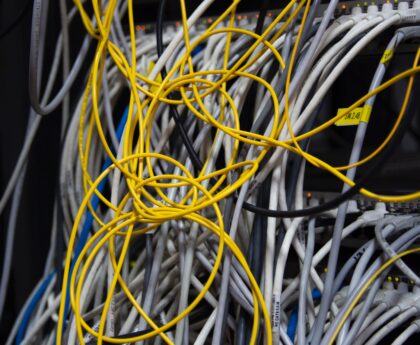Supervisory Control and Data Acquisition (SCADA) systems have become indispensable tools in modern power systems, enabling efficient monitoring and control of electrical infrastructure. These systems rely on various communication protocols to exchange data between field devices and control centers. The choice of communication protocol is critical as it directly impacts the reliability, security, and performance of SCADA systems in power systems. In this blog, we will compare three prominent SCADA communication protocols for power systems: DNP3 (Distributed Network Protocol 3), IEC 61850, and DNP3 protocol testing.
In the ever-evolving landscape of power systems and SCADA technology, the comparison of communication protocols remains a dynamic and ongoing process. With the increasing integration of renewable energy sources, grid modernization, and the emergence of the Internet of Things (IoT), the demands on SCADA systems are continuously growing.
One key aspect that demands attention is the convergence of communication protocols. Efforts are underway to bridge the gap between DNP3 and IEC 61850 to create unified solutions that offer the best of both worlds. This convergence aims to combine the robustness and reliability of DNP3 with the advanced functionalities and data modeling of IEC 61850.
As the power industry strives for more intelligent, efficient, and secure systems, the choice of communication protocols and the effectiveness of DNP3 protocol testing will continue to shape the future of SCADA systems in power systems. Embracing innovative technologies and standardized practices will be critical for power utilities to maintain a competitive edge and provide a reliable and sustainable electricity supply to consumers.
DNP3 (Distributed Network Protocol 3)
DNP3 is a widely used communication protocol in SCADA systems, particularly in the power utility industry. It was designed to address the challenges posed by remote and harsh environments in power systems. DNP3 operates at various layers of the Open Systems Interconnection (OSI) model, offering robustness and versatility.
Advantages of DNP3
- Reliability: DNP3 is known for its high reliability, making it suitable for critical power system applications. It supports redundant communication paths, ensuring data transmission even in the event of network failures.
- Interoperability: DNP3 facilitates interoperability between different devices and vendors, enabling seamless integration into existing SCADA infrastructures.
- Data Prioritization: DNP3 allows users to prioritize critical data, ensuring that essential information is transmitted promptly and reducing delays in critical decision-making.
- Error Checking: DNP3 includes error-checking mechanisms, such as cyclic redundancy checks (CRC), to ensure data integrity during transmission.
Drawbacks of DNP3
- Limited Bandwidth Utilization: DNP3 is not the most efficient protocol when it comes to utilizing available bandwidth, which may become a concern in congested communication networks.
- Security Concerns: While DNP3 offers some security features, such as authentication and encryption, it may not be as robust against cyber threats as some other protocols.
IEC 61850
IEC 61850 is an international standard designed specifically for communication and interoperability in substation automation systems. It has gained popularity due to its ability to support advanced functionalities and seamless integration of Intelligent Electronic Devices (IEDs) in substations.
Advantages of IEC 61850
- High-Level Abstraction: IEC 61850 employs a high-level object-oriented data model, enabling easy configuration and standardized data exchange between devices.
- Efficient Data Transmission: The use of Generic Object-Oriented Substation Events (GOOSE) messages allows for faster and more efficient transmission of critical data, enhancing the responsiveness of protection and control schemes.
- Simplified Wiring: IEC 61850 promotes the use of Ethernet-based communication, reducing the amount of wiring required in substations and leading to cost savings.
- Scalability: The modular nature of IEC 61850 makes it scalable and adaptable to various applications and future expansions in power systems.
Drawbacks of IEC 61850
- Complex Implementation: Implementing IEC 61850 can be complex and time-consuming due to its comprehensive data model and configuration requirements.
- Vendor-Specific Extensions: Different vendors may implement IEC 61850 with vendor-specific extensions, potentially leading to interoperability challenges between devices from different manufacturers.
DNP3 Protocol Testing
Given the criticality of SCADA systems in power systems, rigorous testing of communication protocols is essential to ensure their proper functioning and reliability. DNP3 protocol testing involves verifying the compliance of DNP3 implementations with the standard’s specifications and assessing their performance under various scenarios.
Importance of DNP3 Protocol Testing:
- Quality Assurance: DNP3 protocol testing helps identify and rectify any implementation errors or non-compliant behavior, ensuring that the protocol functions as intended.
- Interoperability Validation: Testing ensures that DNP3 devices from different vendors can communicate seamlessly, promoting interoperability in mixed-vendor SCADA systems.
- Cybersecurity Assessment: Testing can include cybersecurity assessments to identify potential vulnerabilities and weaknesses in DNP3 implementations, enhancing the security of SCADA systems.
Conclusion
In conclusion, selecting the right communication protocol is crucial for the success of SCADA systems in power systems. While DNP3 offers reliability and interoperability, IEC 61850 provides advanced functionalities and efficient data transmission. Additionally, thorough DNP3 protocol testing ensures compliance with standards, interoperability, and cybersecurity. Each protocol has its strengths and limitations, and the choice depends on specific application requirements and the existing infrastructure. As technology continues to evolve, it is essential for power system operators to stay updated with the latest advancements in SCADA communication protocols and make informed decisions to ensure the continued efficiency, security, and reliability of their power systems.

